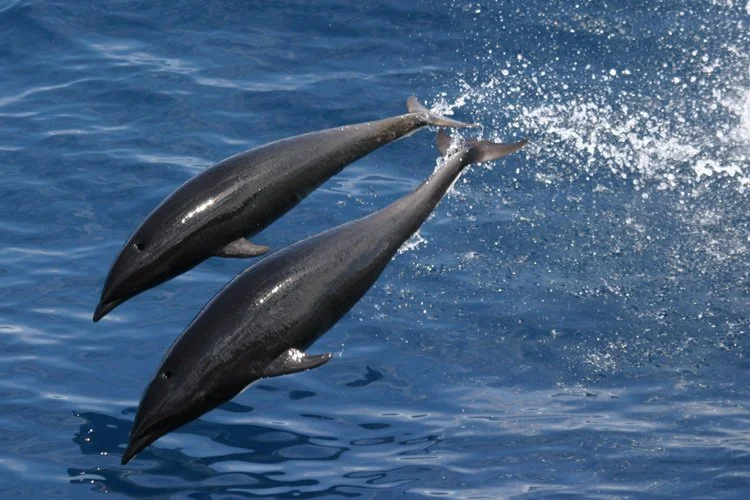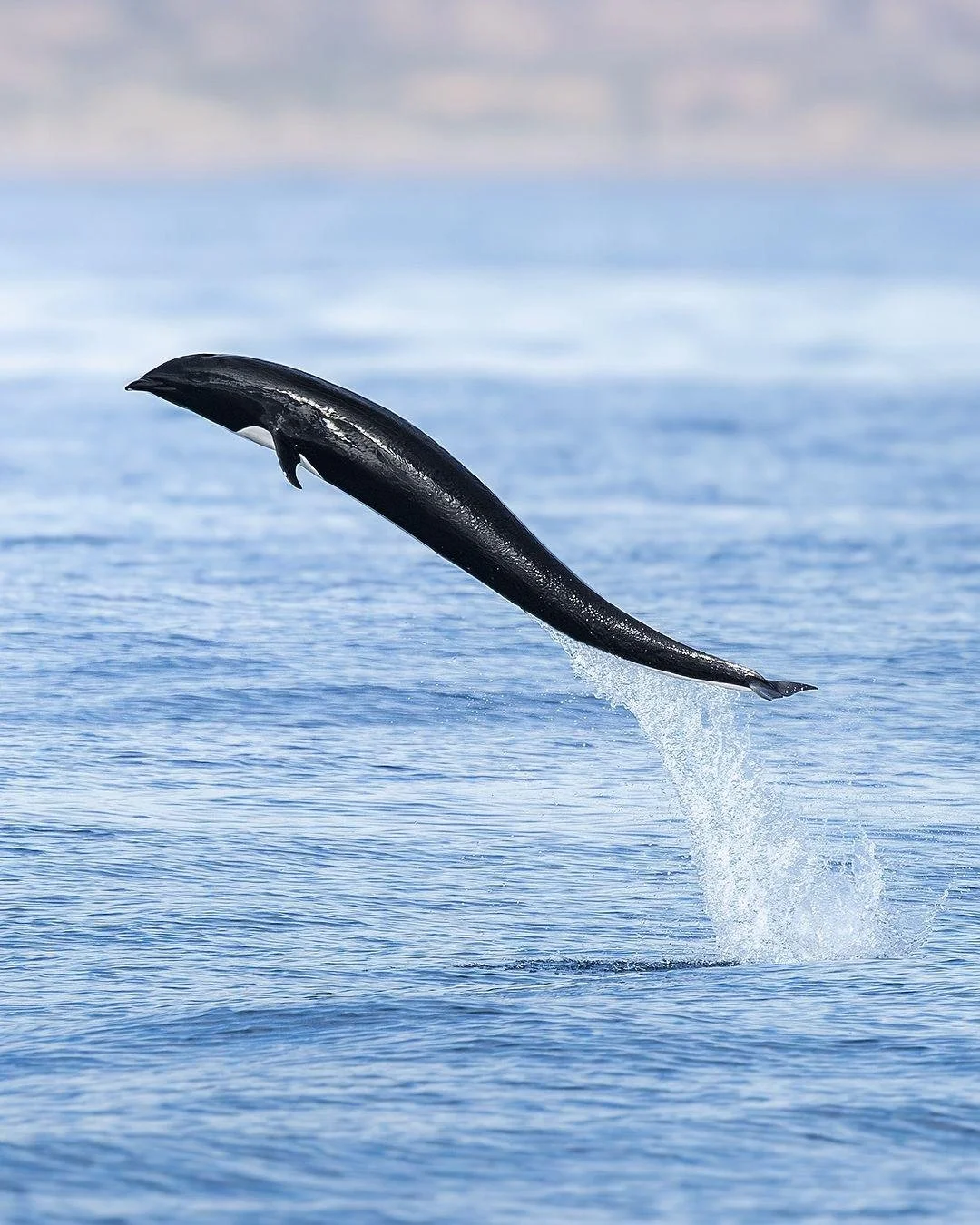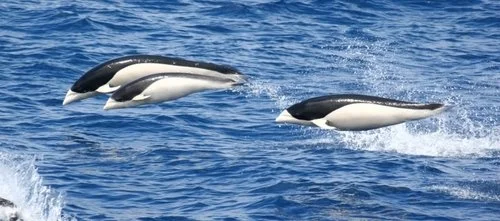Being Finless Never Felt So Right






There are some animals in the world that make me question the sanity of whoever named them. This is one of those instances. This week I want to talk about the Right whale dolphins, who do not look anything like the dolphin version of a Right whale. After a deep, deep dive the name could have come from the lack of dorsal fins in both the dolphin and the Right whale (which I could really go into how they got their name). Let’s dive into it!
What is it? Right whale dolphins are a pelagic dolphins, meaning they prefer deep, open water. Unlike most cetaceans (dolphins, whales, and porpoises), these dolphins do not have a dorsal fin or a dorsal ridge. They are mostly black with a little white on their underside. The Southern right whale dolphin has a bit more white on it than it’s northern cousin. This coloration of dark on top and light on the bottom is called countershading, and is a method a majority of marine life of blending in with their environment. Right whale dolphins are very slender and streamlined, and surprisingly small compared to their relatives. They reach a length of 6.5-10 ft long and weigh anywhere from 130-254 lbs. Biologists believe that these two species live around 42-ish years. They are social and can be found in pods of 100-200, though pods of up to 3,000 individuals has been seen. That is bonkers. What’s funny, because of their lack of dorsal anything, they often get mistaken for herds of fur seal or sea lions.
Where can you find these delightful dolphins? Depends on the species! If you want to see the Northern species, you would look out to the edges of the coastal shelf into the open ocean ranging in the cool waters from Japan, up to Russia, across the Bering Straight to Alaska, down the West Coast to northern Baja. The Southern species live circumpolar around Antarctica and can be found around the southern coasts of South America, Africa’s Cape of Good Hope, and Australia/New Zealand. They can dive fairly deep as well, around 660 ft.
What do the Right whale dolphins eat? I assume seafood. There isn’t much else in the open ocean. These dolphins remain a mystery for the most part, but biologists believe their preferred meal is squid. Other prey include lanternfish and oceanic fish like saury, which surprisingly isn’t a fish from the Midwest, but a slim silver colored fish.
How do we get baby right whale dolphins? Biologists are still learning about these mysterious dolphins, but here’s what they have gathered so far. Their best estimation is sexual maturity is around 9-10 years old. The gestation period is probably a little over 12 months, with a higher rate of calves being born in July and August. From birth to around 1 year old, calves are a creamy grey to a dark brown color, and around 1 year old they gain the adult coloration of black and white.
Do we know if right whale dolphins have superpowers? We sure do! Both species of dolphins are social butterflies. They can form super pods of up to 3,000 dolphins, BUT they are super inclusive, and fully believe “the more, the merrier”. They have been spotted hanging out in mixed species groups with Pacific white-sided dolphins, Baird’s beaked whales, Dall’s porpoises, Pilot whales, Risso’s dolphins, and many others. Superpower number two! They are super fast swimmers. These dolphins are streamlined torpedos that average around 16mph but can reach speeds up to 25mph! Superpower number three is pretty incredible….they are quite the aquatic acrobats. Right whale dolphins are known to breach (jumping so they are fully out of the water), belly-flop, and slapping the water with their tails and pectoral fins (please don’t ask me to call them flippers). That might not sound so super, but when I say they can jump, I mean they can j—u —m—p! Biologists have observed these dolphins to jump over 20 ft into the air, and when traveling quickly, they can easily jump a distance of 22 feet (almost 23 really). If those aren’t superpowers, I don’t know what is.
How many are there? There are two species of right whale dolphins, the northern and the southern. This isn’t due to a cetacean civil war, but simply which hemisphere they live in. As far as population numbers go, biologists just do not know. However, they believe these dolphins are the most populous of all oceanic dolphins. Woo!
The Science Part!!!!
Right whale dolphins - Lissodelphis (meaning smooth dolphin)
Northern right whale - Lissodelphis borealis
Southern right whale - Lissodelphis peronii
According to the IUCN Red List, both species are listed as Least Concern. The main threats these dolphins face come in the form of commercial fishing, especially those using driftnets, gillnets, and long lines. They are also occasionally hunted for food and blubber.
Resources:
Braulik, G. (2018). Lissodelphis peronii. The IUCN Red List of Threatened Species 2018. https://dx.doi.org/10.2305/IUCN.UK.2018-2.RLTS.T12126A50362558.en
Braulik, G. & Jefferson, T.A. (2018). Lissodelphis borealis. The IUCN Red List of Threatened Species 2018. https://dx.doi.org/10.2305/IUCN.UK.2018-2.RLTS.T12125A50362415.en.
NOAA Fisheries. (2022). Northern right whale dolphin. Species Directory. https://www.fisheries.noaa.gov/species/northern-right-whale-dolphin/overview


